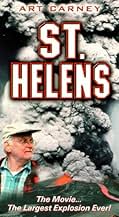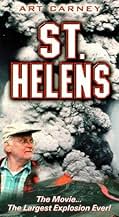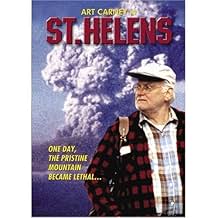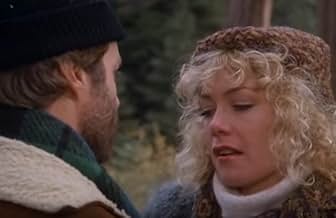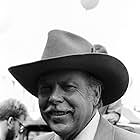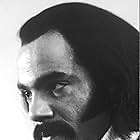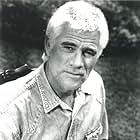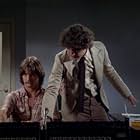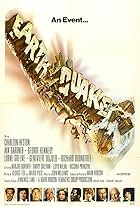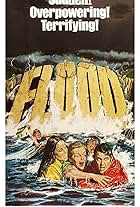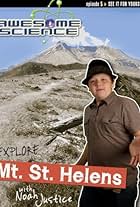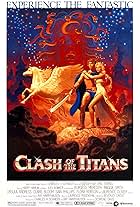Dramatization of the 1980 eruption of Mount St. Helens. The movie begins with the volcano's awakening on March 20, 1980 and ends with its eruption on May 18.Dramatization of the 1980 eruption of Mount St. Helens. The movie begins with the volcano's awakening on March 20, 1980 and ends with its eruption on May 18.Dramatization of the 1980 eruption of Mount St. Helens. The movie begins with the volcano's awakening on March 20, 1980 and ends with its eruption on May 18.
Danny Chambers
- Col. Arnholt
- (as Dan Chambers)
Storyline
Did you know
- TriviaDavid Jackson is based on real-life scientist David Johnston. He died in the same way and uttering the same final words into his radio before the blast of Mt. St. Helens hit him, "Vancouver! Vancouver! This is it!" The rest of the depiction of him, however, was decried by Johnston's family and his colleagues at the USGS for misrepresenting his character, so much so that Johnston's family threatened to sue the filmmakers for libel.
- GoofsHarry Truman, contrary to his depiction in the movie, never owned a dog. In fact, at the time of the eruption he owned 16 cats and raccoons all of whom lived indoors with Truman.
- Quotes
David Jackson: [talking into a CB radio right after St. Helens erupts] Vancouver! Vancouver! This is it!
[the blast consumes him]
- Crazy creditsWhen the cast list rolls during the end credits, then this can be seen: "Stunt Baby Beau Davis"
- ConnectionsReferenced in Alpha to Omega: Exposing 'the Osterman Weekend' (2004)
- SoundtracksThe Climb Is Worth the Fall
Written and Performed by Corky Corson and "Buckboard"
Featured review
First I must take issue with the reviewer who found this film boring because he classed it as a disaster movie, and felt there was not the suspense necessary for a good disaster movie. Personally I would question whether disaster movies really comprise a distinct category - they are dramas in the thriller category where the more usual dramatic excitement of violent action is replaced by the tension of waiting to see whether or not the impending disaster can be staved off. To maintain this tension, such a movie has to be based on a fictional story. By contrast, films of real events can be full documentaries which were filmed only in advance or concurrently; or semi-documentaries in which some of the essential scenes have had to be fictionally, but as accurately as possible, reconstructed and filmed after the event. St. Helens clearly fits this latter category. Such films should have a sufficiently dramatic story to retain the viewers interest throughout, but they also have a very important role to play in conveying to the general public in dramatic terms the actual impact of the event in question on the lives of the ordinary people who were affected. We judge the success of semi-documentaries from the extent to which they succeed in satisfying these two objectives. In my view St. Helens meets both objectives well, and was artistically a most successful film.
Volcanic eruptions are not rare events, but the eruption in North America of a volcano generally regarded by the public as extinct, attracted enormous public attention as events unfolded day by day. Millions in North America experienced dull skies and falling ash over a period of several days, and those of us who are old enough remember the story very well. Ultimately this eruption cost fifty nine lives, but two of these in particular provided the media with ongoing human interest stories and later provided the core story for this movie. One was the young geologist from the U.S. Geological Survey who allowed his enthusiasm to run away with him to such an extent that he was conducting monitoring in an area very close to the mountain when the eruption took place. He saw it happen, and had time to report it by telephone before he was overwhelmed by the escaping gases or falling rocks. The other was the elderly retired man living alone in a cabin on Spirit Lake very close to the volcano who consistently refused to be evacuated until too late. These are the principal characters in this semi-documentary, and both are portrayed very sympathetically so that their self destructive behaviour becomes quite understandable. I would rate this as a very good film - I also have an 'official' full documentary account of this eruption on videotape, it provides many interesting facts about the scientific impact on the area; but this dramatised semi-documentary with its human interest stories is the one which will bear watching repeatedly, and it is commendably careful not to seriously distort any of the facts in the interests of artistic licence. We may never be near a volcano that is threatening to erupt, but we read about such eruptions each year and this film helps to give us a better understanding of what one is really like.
Volcanic eruptions are not rare events, but the eruption in North America of a volcano generally regarded by the public as extinct, attracted enormous public attention as events unfolded day by day. Millions in North America experienced dull skies and falling ash over a period of several days, and those of us who are old enough remember the story very well. Ultimately this eruption cost fifty nine lives, but two of these in particular provided the media with ongoing human interest stories and later provided the core story for this movie. One was the young geologist from the U.S. Geological Survey who allowed his enthusiasm to run away with him to such an extent that he was conducting monitoring in an area very close to the mountain when the eruption took place. He saw it happen, and had time to report it by telephone before he was overwhelmed by the escaping gases or falling rocks. The other was the elderly retired man living alone in a cabin on Spirit Lake very close to the volcano who consistently refused to be evacuated until too late. These are the principal characters in this semi-documentary, and both are portrayed very sympathetically so that their self destructive behaviour becomes quite understandable. I would rate this as a very good film - I also have an 'official' full documentary account of this eruption on videotape, it provides many interesting facts about the scientific impact on the area; but this dramatised semi-documentary with its human interest stories is the one which will bear watching repeatedly, and it is commendably careful not to seriously distort any of the facts in the interests of artistic licence. We may never be near a volcano that is threatening to erupt, but we read about such eruptions each year and this film helps to give us a better understanding of what one is really like.
- How long is St. Helens?Powered by Alexa
Details
- Runtime1 hour 30 minutes
- Color
- Sound mix
- Aspect ratio
- 1.85 : 1
Contribute to this page
Suggest an edit or add missing content


